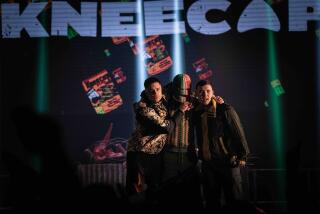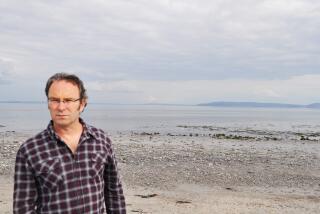Irish Folktales <i> edited by Henry Glassie (Pantheon: $19.95; 353 pp., illustrated)</i>
- Share via
One-hundred-and-twenty-five tales, great and small, make up this latest addition to Pantheon’s “Fairy Tale and Folklore Library,” a series as eclectic as it sounds. The Library volumes already published include several classic collections of European folk tales (such as the Grimms’), Gustav Schwab’s venerable book of Greek myths, Hans Andersen’s psychodramatic fairy tales, and new anthologies of American Indian and Afro-American lore.
In creating an Irish book to join this colorful company, folklorist Henry Glassie has met a formidable challenge. Since antiquity, Irish storytellers have been some of the liveliest in the world. And there have been plenty of other Irish--from early Christian monks to state-employed folklorists--who’ve eagerly attended and recorded their yarns. As a result, any anthologist of what can be loosely called the spoken literary tradition of Ireland has too much to choose from: ancient epics of war and cattle-rustling; curious legends about nearly every Irish saint, fairy, politician, cave and hillock; stories of ghosts, demon lovers, youngest sons, and infinitely more.
Prof. Glassie leads tenderfoot readers through this virtual sierra of story in the only way humanly possible, that is, by following his heart. The book opens with a description of the earnest American professor himself traveling to a “smoke-dark house” in the north of Ireland, to hear “farmers poor in the things of the world” swap tales during the long, wet nights of winter. Having warmed us with this sentiment, Glassie discusses the history of folk-tale collecting in Ireland, alerting us to the ethical/aesthetic problems that occur when a spoken narrative is coldly plucked from its social context and made bookish. Since 24 of the tales that follow are from tapes he recorded in the north, he then explains the editing techniques he has used to minimize such problems.
Then come the tales, a marvelous assortment selected from published (but often out-of-print) collections by the likes of pioneer collectors Lady Wilde, Robin Flower and Jeremiah Curtin, and from unpublished manuscripts in private and state-owned archives.
There are stories here on most of the subjects I’ve mentioned, plus many others, equally involving, such as those about the banshee, the secret habits of cats and hares, and Ireland’s thumb-sucking super-hero Finn MacCumhail (or, as I prefer, MacCool). While offering a fair representation of Irish stories, Glassie has selected and ordered his material to convey the values of the tale-tellers themselves, not “the values of scholars.” And his scholarship is informed with such effective sympathy that this pastiche of tales from many different collectors, tellers and counties, from about 1890 to the present, has a natural and graceful coherence. Still, almost every tale is completely enjoyable on its own.
Integrity of values is only part of the reason. The other life force that keeps these stories together and whole through generations is the Irish version of the English language: something akin to the “powerful and barbarous tongue” attributed to true poets in one tale. It can be as subtle as: “While she was dressing herself he went about the town doing some errands, and he had a small drink” (in “How the Shoemaker Saved His Wife”). Or it can be as bold as: “The buck-cat . . . stood listening. Then, with a hiss and a snarl, he was out of the door like running water. The wind died on the moment, and not one thing stirred, bar the clock--the tick of it would deafen you, like as if you had your ear to an anvil” (in “Never Ask a Cat a Question”). But it almost invariably enthralls, as the mere “beautiful words” the book’s jacket boasts of cannot.
Oddly, it is Prof. Glassie’s mistrust of the peculiar cadences of Irish English, in the tales he himself recorded, that creates the single serious flaw in his book. In keeping with the dominant practice of folklore science today, he has not added words, changed word order, or adopted dialect spelling in one of the tales. He has, however, imposed on them the typographic/punctuation scheme associated with that most self-consciously bookish and non-Irish form: the modern prose poem. In his tale “Experience of the Banshee,” for example, a rooster crows a warning thus:
“And he started to crow and crow,
and crow and crow
till I was frightened,
the life was frightened out of me.
And the Banshee came on.
He still kept nearer and nearer.
He drew nearer.”
For page after page, the scheme taxes the reader’s attention while it saps the storytellers’ words of force and surprise. Tales written out this way are removed from the realm of popular literature, with its relaxed redundancy, and framed as more precious art. They become inaccessible. More’s the pity, for Glassie has clearly taken this editorial step out of love and in an effort to preserve what he felt in the smoke-dark house. It is also his wish “to ease your entry into Irish folk culture.”
In the main, he has succeeded, and--although I betray values more Scottish than Irish, I must add: His book is worth every penny.
More to Read
Sign up for our Book Club newsletter
Get the latest news, events and more from the Los Angeles Times Book Club, and help us get L.A. reading and talking.
You may occasionally receive promotional content from the Los Angeles Times.









